NAVYPEDIA
 Support the project with paypal
Support the project with paypal
Ships
| Names | Builders | Completed | Losses | Transfers | Discarding |
|---|---|---|---|---|---|
№1-50 later 2 were rebuilt as: Кета [Keta] Челим [Chelim] |
Nevsky Wks, St. Petersburg: №1-50 |
1880-1881: №1-50 4/1905: Keta |
none |
none |
1891: №1 - 50 10/1908: Keta |
Technical data
| Data variant | as completed | Keta | Chelim |
|---|---|---|---|
| Displacement standard, t |
|
|
|
| Displacement normal, t | / 6 |
8 |
/ 14 |
| Length, m | 5.7 - 6.0 |
7.50 |
8.70 |
| Breadth, m | 1.20 |
1.00 |
1.98 |
| Draught, m | 1.10 | 1.00 | 1.10 |
| No of shafts | 1 |
1 |
1 |
| Machinery | muscle |
1 petrol engine |
1 gasoline engine |
| Power, h. p. | 2 men |
14 |
14 |
| Max speed, kts | 0.5 / 2.5 |
4 - 7 |
|
| Fuel, t | food only:) |
petrol |
gasoline |
| Endurance, nm(kts) | 175 (0.5) / 25(1) | / 0.4 | |
| Armament | 2 mines |
1 x 1 - 7.6/94, 2 - 450 TC |
2 - 381 TC (stern) |
| Complement | 3 | 3 - 4 | 3 |
| Diving depth operational, m | 10 |
8 (for 3 - 5 minutes) |
3 |
Standard scale images

№1 1880
Project history
This midget submarine series of 52 boats were built to 3 designs by the Polish engineer Stefan Drzewiecki. The prototype boat was of twin hull construction (upper part housed the operator, the lower one - ballast tank) and built as one of the Russian measures to counter the Turkish Fleet during the 1877-78 Russo-Turkish War. The armament of 2 dynamite mines was to be fixed to the bottom of a target ship with a rubber suction cup in the operator's hands which were covered with watertight rubber sleeves. After successful trials in which a lighter was destroyed, the Naval Authority refused to fund further experiments after the conclusion of hostilities with Turkey. The idea was however approved by the Army Authority which ordered the Type II boat. After a series of successful trials and presentation to the Czar an order was placed for 50 boats (Type III) with some changes incorporated. The iron hull of oval section had a small bridge positioned centrally, 2 pockets (one forward, one aft) for stowage of mines and 2 hook eyes at both ends to hoist the boat ashore or on to the davits of a mother vessel. The mines were operated with the help of air-filled rubber cushions. The whole series was built in great secrecy and the boats were to be used in the close defence of coastal fortresses; 16 boats were attached to Kronstadt, 32 were divided between Sevastopol and Odessa and 2 were used for further trials.
Modernizations
Two Type III boats were converted in 1884 for experiments with electric propulsion. One was fitted with 1hp motor and water jet propeller thus enabling her to develop 3kts while the second one received a 1.8hp electric motor and 1 screw which gave a speed of 4kts and battery capacity enough for 10 hrs.
Keta was one of the Type III Drzewiecki midget submarines converted into a low profile patrol submersible by the Lessner Wks, St. Petersburg in 1905 and transferred to the Far East. Her data were as given in the table.
1905, Keta: petrol engine was replaced by 24hp; + 1 x 1 - 37/20 Hotchkiss
One more boat was rebuilt as Chelim (Chilim) with data as given in the table.
She was completed and in September 1905 arrived Vladivostok by railway but never was commissioned by Navy. She was used for food transportation.
 HOME
HOME FIGHTING SHIPS OF THE WORLD
FIGHTING SHIPS OF THE WORLD RUSSIA / USSR
RUSSIA / USSR SUBMARINES
SUBMARINES Drzewiecki type III midget submarines (1880-1881)
Drzewiecki type III midget submarines (1880-1881)
